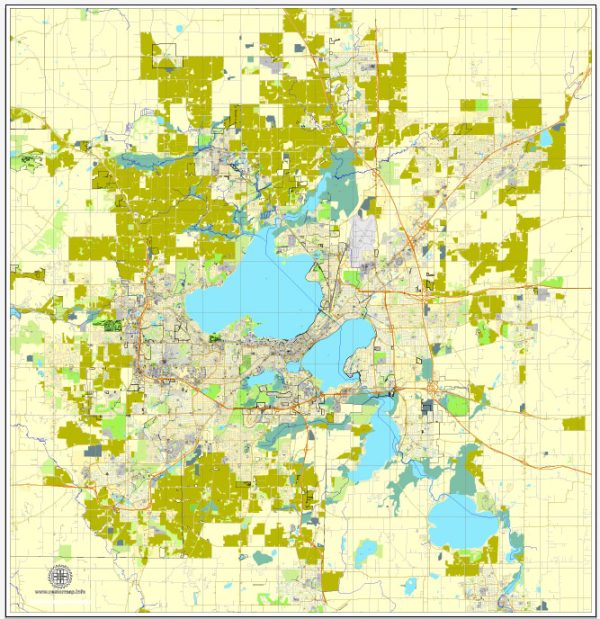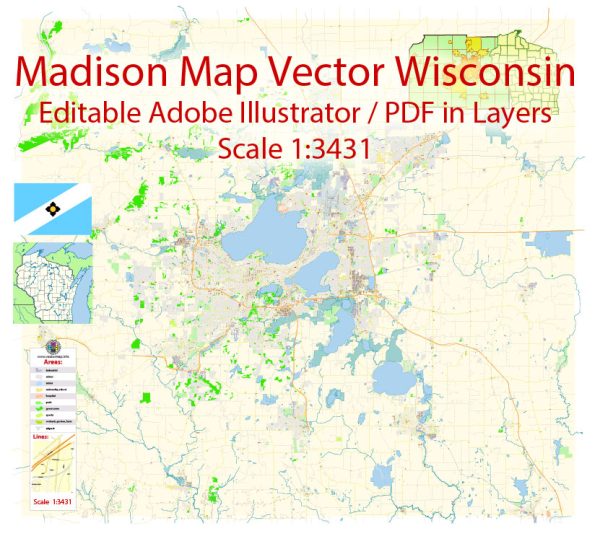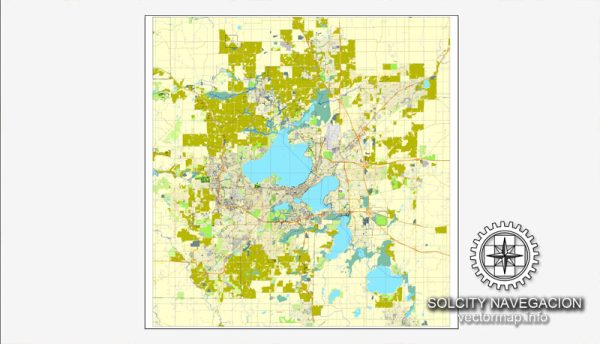Madison, the capital city of Wisconsin, has a rich history of urban development that reflects the broader trends in American urbanization. Here’s a brief overview:
1. Early Settlement and Planning (1836-1850s):
- Madison was selected as the capital of the Wisconsin Territory in 1836 due to its central location.
- The city’s design was influenced by urban planner James Duane Doty, with a grid layout centered around the Capitol Square.
- The University of Wisconsin-Madison was established in 1848, contributing to the city’s growth and intellectual character.
2. Civil War and Postwar Era (1860s-1890s):
- The Civil War brought economic growth to Madison, and the postwar period saw increased industrialization.
- Railroad development played a crucial role, connecting Madison to other cities and facilitating transportation of goods and people.
- The growth of the University continued, shaping the city’s cultural and educational landscape.
3. Progressive Era (1900s-1920s):
- Madison became a focal point of the Progressive Movement, with leaders like Robert La Follette advocating for social and political reforms.
- The Capitol building, completed in 1917, remains a prominent symbol of Madison’s civic identity.
4. Mid-20th Century (1930s-1960s):
- Urban renewal projects in the mid-20th century aimed at modernizing the city, but some of these initiatives faced criticism for displacing communities.
- The construction of the Frank Lloyd Wright-designed Monona Terrace was proposed in the 1930s but completed in 1997, contributing to the city’s architectural uniqueness.
5. Late 20th Century and Beyond (1970s-Present):
- Madison experienced suburbanization and continued growth in the latter half of the 20th century.
- The city has embraced environmental sustainability, with a focus on green spaces and alternative transportation.
- The development of technology and the growth of the healthcare and education sectors have further diversified the city’s economy.
6. Urban Challenges and Community Engagement:
- Like many cities, Madison has faced challenges such as racial and economic disparities, which have led to community activism and efforts to address inequality.
- Ongoing debates about urban development involve balancing economic growth with preserving the city’s character and addressing social issues.
Overall, Madison’s history reflects the broader evolution of American cities, with phases of expansion, modernization, and the ongoing challenge of balancing growth with community values. The city continues to evolve, shaped by its dynamic history and the efforts of its residents to create a vibrant and inclusive urban environment.




 Author: Kirill Shrayber, Ph.D.
Author: Kirill Shrayber, Ph.D.